(Page créée avec « A translucent cover placed on the basin allows the culture medium's temperature to rise quickly in the morning and to keep its heat at night. A polycarbonate plate acts as... ») |
(Page créée avec « Insulation ») |
||
| Ligne 128 : | Ligne 128 : | ||
{{ {{tntn|Tuto Step}} | {{ {{tntn|Tuto Step}} | ||
|Step_Picture_00=Bassin_de_culture_de_spiruline_isolation.jpg | |Step_Picture_00=Bassin_de_culture_de_spiruline_isolation.jpg | ||
| − | |Step_Title= | + | |Step_Title=Insulation |
|Step_Content=* Mettre deux ou trois couches de cartons à l’intérieur du bassin sur le plancher. | |Step_Content=* Mettre deux ou trois couches de cartons à l’intérieur du bassin sur le plancher. | ||
}} | }} | ||
Version du 8 février 2018 à 11:35
Description
Building of a spirulina-growing raised pond
Sommaire
Sommaire
- 1 Description
- 2 Sommaire
- 3 Introduction
- 4 Video d'introduction
- 5 Étape 1 - Pond support structure: low frame
- 6 Étape 2 - Pond support structure : raising
- 7 Étape 3 - Pond support structure : high frame
- 8 Étape 4 - Pond support structure : support floor
- 9 Étape 5 - Culture pond : pond structure
- 10 Étape 6 - Culture pond : hood
- 11 Étape 7 - Insulation
- 12 Étape 8 - Étanchéité
- 13 Étape 9 - Assemblage
- 14 Notes et références
- 15 Commentaires
Introduction
The construction of a family culture pond makes it possible to produce a large quantity of spirulina in a relative small space. For an ideal production the culture pond must be 20 cm in depth. With less than 20 cm, the pool is not fully exploited, whereas with more spirulina is not sufficiently exposed to light, the production is slowed down. The French Spirulina Federation recommends a consumption of 50 grams a day. It takes 1 m² of pond to produce these 50 grams of micro-algae on a daily basis. The size of the pool is to be adapted according to the number of people wishing to consume spirulina every day. In our case, we are three, so we will build a pool of 3 m².
The pond presented in this tutorial is raised to allow to work standing, which is more comfortable. It also allows material to be stored under the basin. Starting at the "Culture pond" step offers a more economical and quick alternative.
This tutorial is done in collaboration with Enkidou Burtschell, specialist in bioclimatic eco-construction and state-certified spirulina producer.
See the video here and spirulina culture.
Matériaux
- 50 to 100 mm long wood screws
- 18mm lath
- Half-rafter
- Leveling feet
- Geotextile
- Waterproof tarpaulin
- Staples
- Greenhouse tarpaulin or food film
- Polycarbonate plate 3x1 m
- Cardboards
- Silicone
Outils
- Circular saw / miter saw
- Hand saw
- Screwdriver
- Electric planes
- Stapler
- Silicone gun
Étape 1 - Pond support structure: low frame
- Make 3x1m frame with half-rafters,
- Place a bracket of about 30 cm in each corner,
- Add two half-rafter stiffeners, one at 1 m, the other at 2 m lengthwise.
Étape 2 - Pond support structure : raising
For ergonomics, it is necessary to adjust the height of the basin to the worker's size. The basin is 30 centimeters high. In our case the bottom of the basin is one meter above the ground. When calculating the height of the legs, the thickness of the low and high frames must also be taken into account.
- Make 4 legs with half-rafters,
- Place the corner legs aligned with the corners of the bottom frame,
- Install four central legs, of a single half-rafter, facing each stiffener of the low frame,
- Place a bracket about 30 cm between each center leg and its bottom frame stiffener, four in total.
Étape 3 - Pond support structure : high frame
The top chassis is a copy of the bottom chassis.
- Lay two new 3m long half-rafters on the legs, above the bottom frame ones, to make the length of the high frame.
TIP Start by screwing the half-chevrons on the corner legs and then on the central legs
- Lay the two half-chevrons that close the frame breadthwise,
- Install two central stiffeners, above the low frame and the central legs ones,
- Place a bracket of about 30 cm in each corner of the top frame.
Étape 4 - Pond support structure : support floor
- Install a plywood floor approximately 18 mm thick on the high frame,
- Screw the boards on the stiffeners.
The raising of the pond is finished.
Étape 5 - Culture pond : pond structure
For ergonomics, the front is lower than the bottom. 30 cm at the front, 40 at the back of the basin. To improve the production, we isolate the basin, it will keep the heat longer during the day, which is important for spirulina. In our case, an air gap between two planks isolates the culture.
- Place a cleats frame on the floor 18 mm from the edges of the floor. Distance to adapt according to the thickness of the trench used to make the basin,
- Make a lath frame inside the cleats frame,
- Make a lath frame outside the cleats frame,
- Put cleats vertically between the two lath frames, as an extension of the central legs, and one on each side of the four angles,
- Cut some planks to lift the initial frames (inside and outside) so that the height of the pool is 30 cm at the front and 40 cm at the back. The two sideboards must be cut diagonally to bind the two sides of the basin,
- Fix the two new frames (inside and outside) on the vertical cleats resting on the first frames. Start with the inner frame,
- Cut the parts of the vertical cleats that protrude.
ATTENTION For the inner frame, the screws must come from the inside and go outwards otherwise there is a risk of bursting the tarpaulin. HINT Add straw, wool, newspaper or cardboard between the two frames to insulate even better.
Étape 6 - Culture pond : hood
A translucent cover placed on the basin allows the culture medium's temperature to rise quickly in the morning and to keep its heat at night. A polycarbonate plate acts as a canopy. A film of greenhouse tarpaulin or food film prevents the contact between spirulina and polycarbonate whose health effects are not known.
- Make a half-rafter frame the size of the top of the basin,
- Put two central stiffeners,
- Put a bracket of about 30 cm in each corner,
- Put the greenhouse cover or the food film on one side, turn the frame and staple the plastic film on the frame,
- Make a silicone bead on the frame's contour, where the tarpaulin is stapled,
- Place the polycarbonate plate at frame size on the silicone joint,
- Screw,
- Set the hood aside to proceed to the isolation and sealing steps.
Étape 7 - Insulation
- Mettre deux ou trois couches de cartons à l’intérieur du bassin sur le plancher.
Étape 8 - Étanchéité
Un géotextile permet d’améliorer l’isolation et surtout d’éviter à la bâche de se déchirer
- Poser le géotextile au fond du bassin et qui remonte le long des parois,
- Lisser le tissu à la main pour éviter les plis et surépaisseurs,
- Privilégier un peu de « mou » sur le géotextile pour qu’il ne se déchire pas avec la pression de l’eau,
- Plier proprement les angles,
- Agrafer tous les 20 cm sur le cadre extérieur,
- Couper les sur-longueurs de géotextile à 2 cm du haut du bassin,
- Poser la bâche au fond du bassin et la faire remonter le long des parois,
- Lisser la bâche à la main pour éviter les plis et surépaisseurs,
- Privilégier un peu de « mou » sur la bâche pour qu’elle ne se déchire pas avec la pression de l’eau,
- Plier proprement les angles,
- Agrafer tous les 20 cm sur le cadre extérieur,
- Couper les sur-longueurs de bâche à 2 cm du haut du bassin,
Étape 9 - Assemblage
- Poser une charnière tous les mètres entre le capot et la face arrière du bassin,
- Visser des tasseaux « en couronne » du cadre extérieur pour recouvrir la bâche et le géotextile au niveau des agrafes et des charnières,
- Poser un tissu d’ombrage sur le capot.
Le bassin est finit, il n’y a plus qu’à préparer un milieu de culture, installer une pompe d’aquarium puis ensemencer la spiruline.
Notes et références
Pour plus d’information sur la culture familiale de la Spiruline : Le tutoriel
Pour la construction de bassins :
Pour matériels et produits nécessaires à la culture de spiruline :
Autres références :
- Documentation réalisée par Amandine Garnier, Camille Duband & Clément Chabot, Aout 2017
Yes
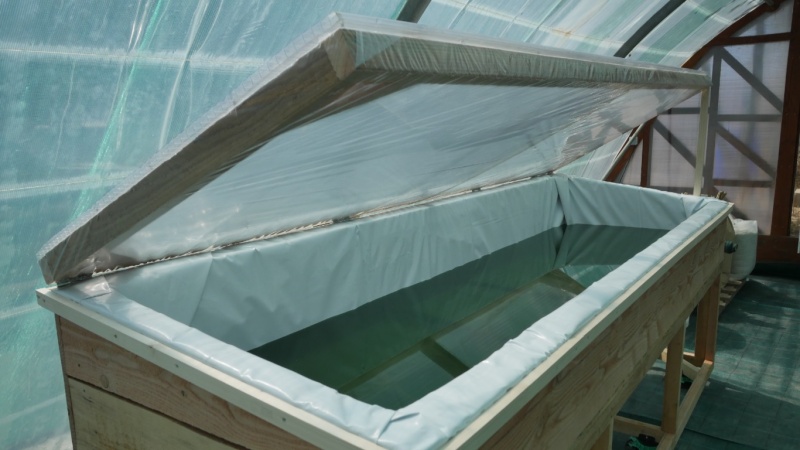
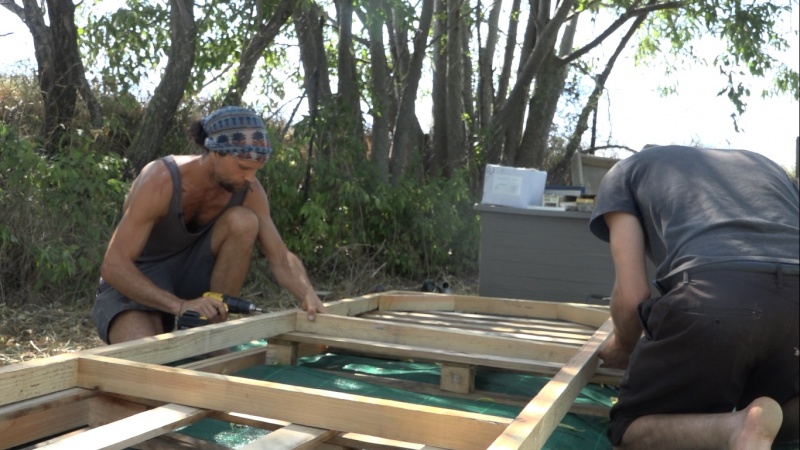
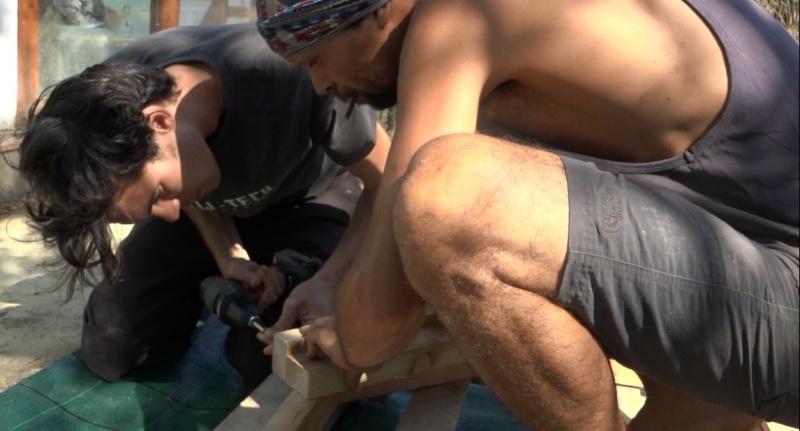
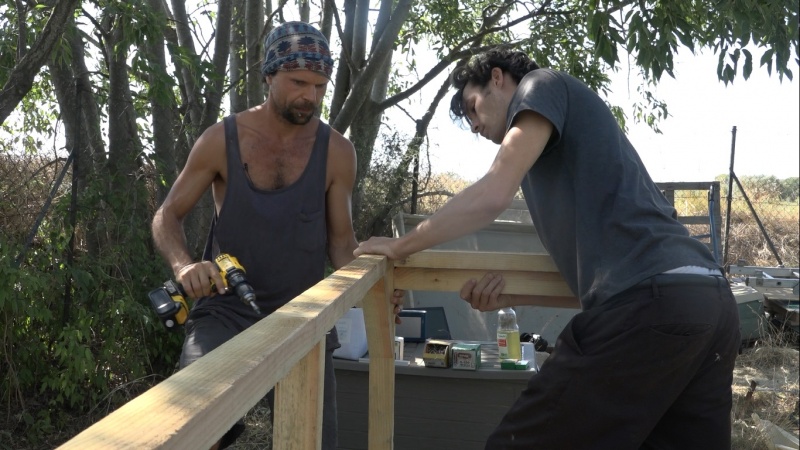
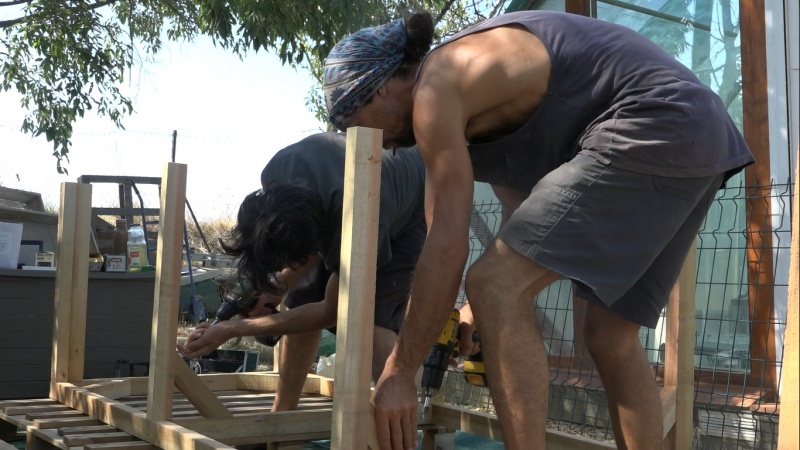
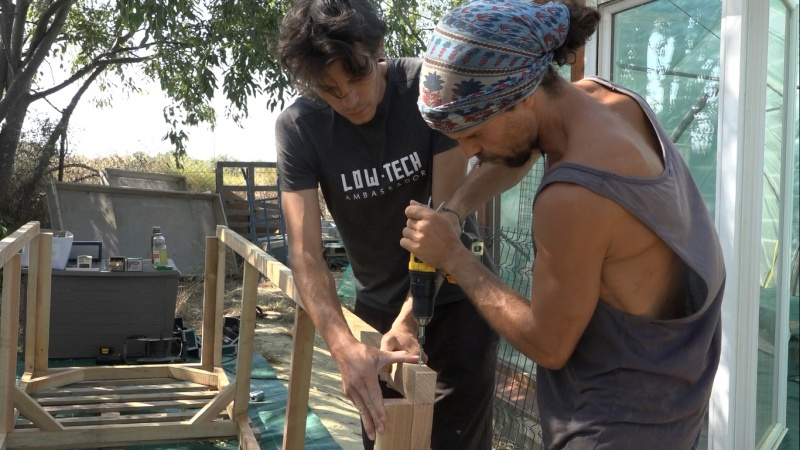
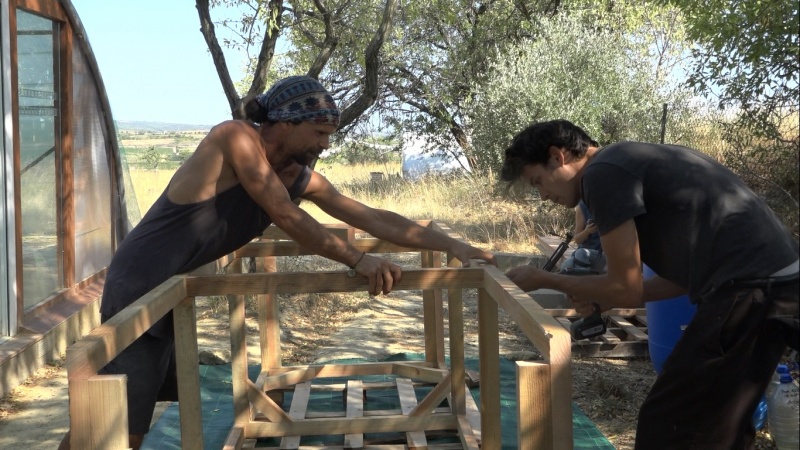
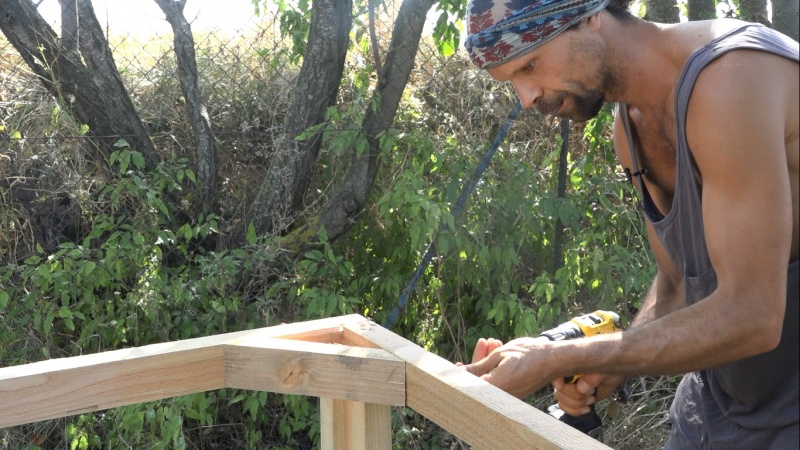
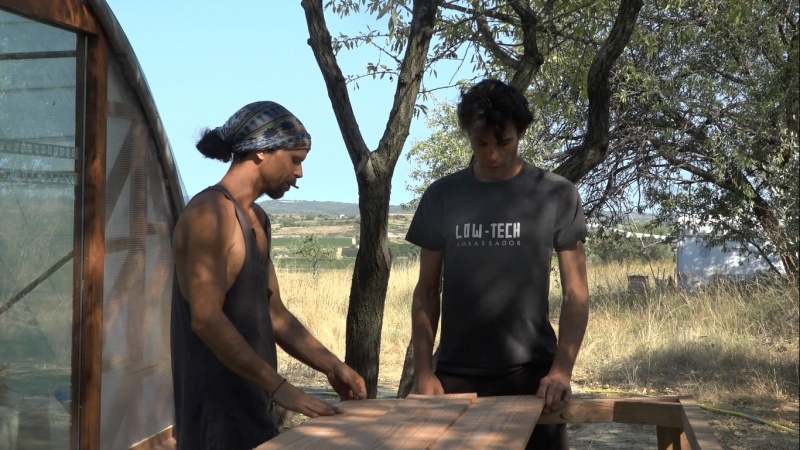
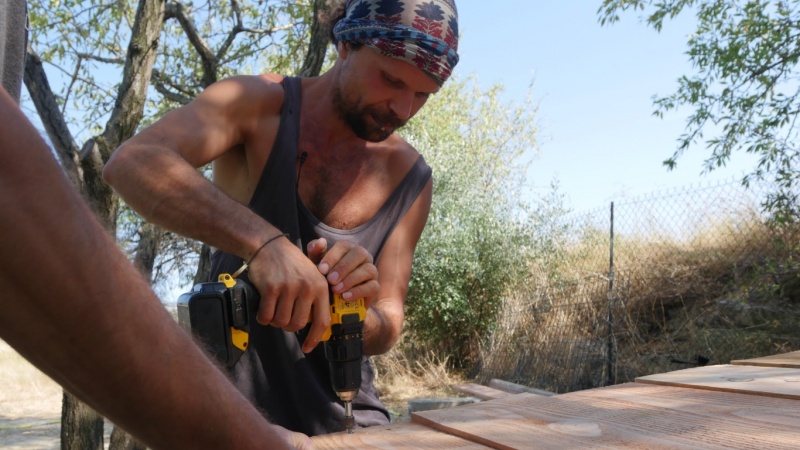
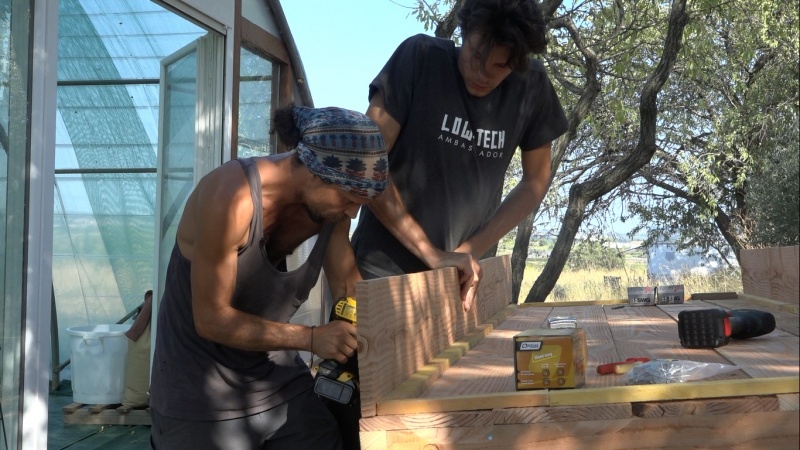
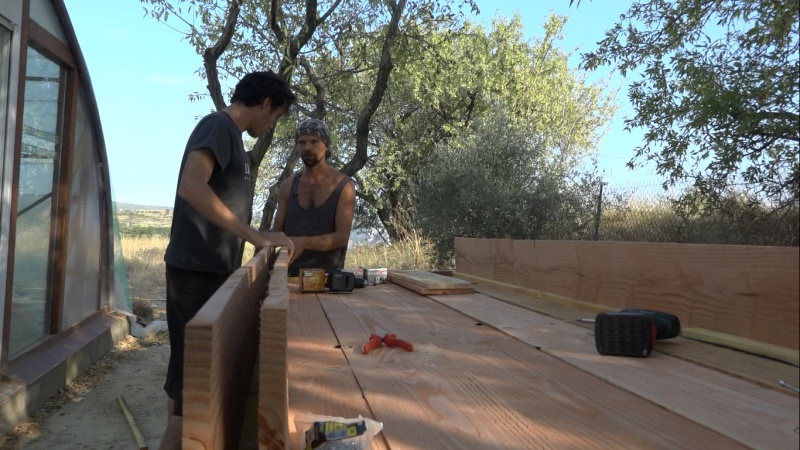
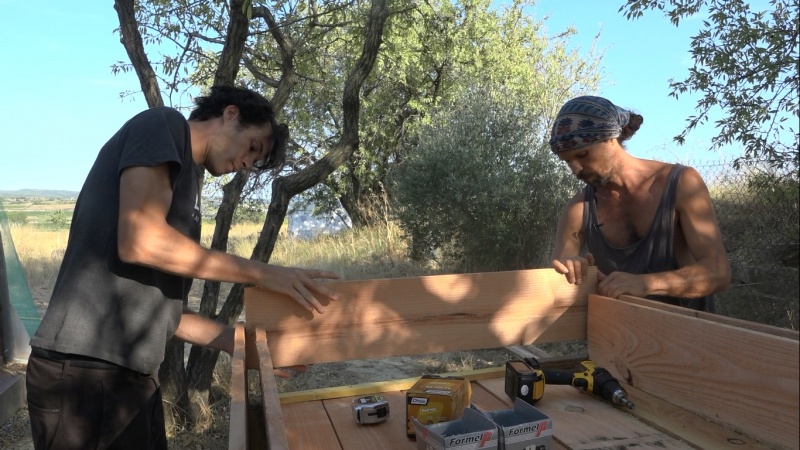
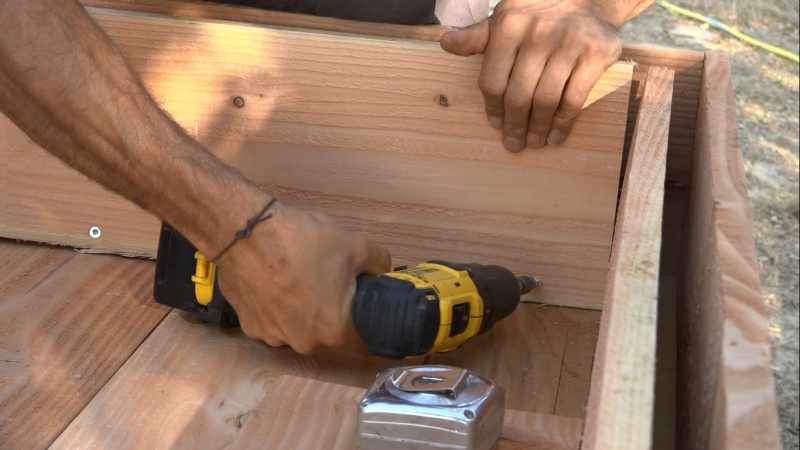
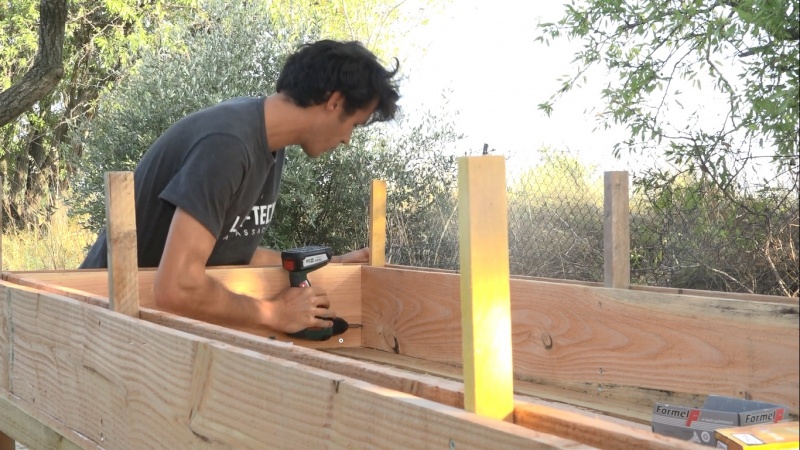
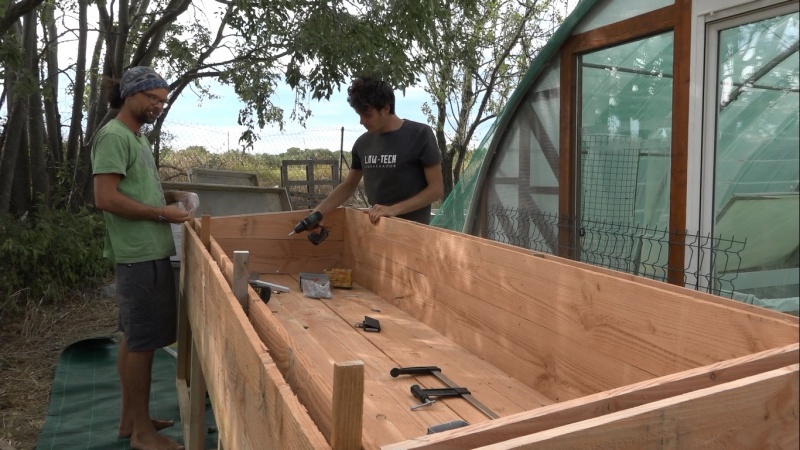
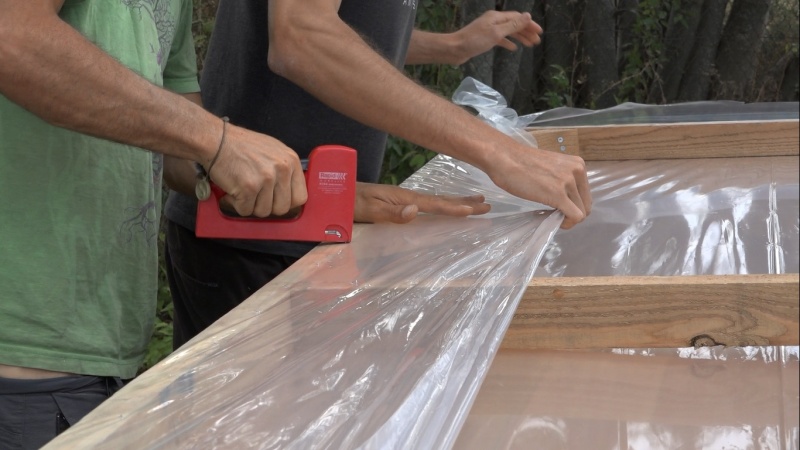
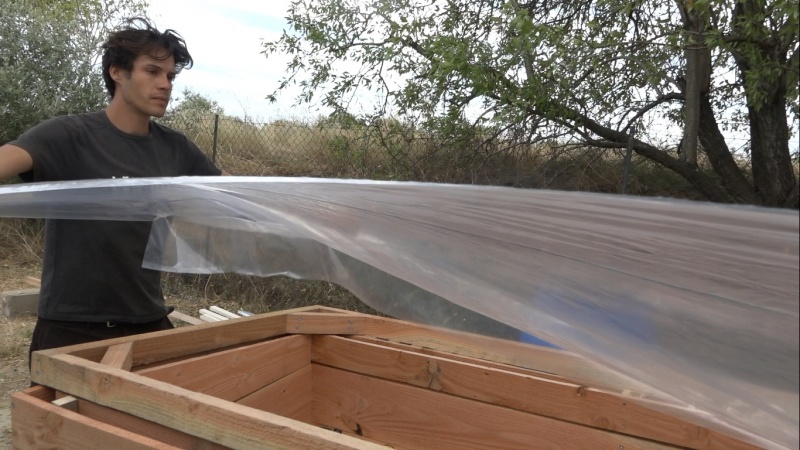
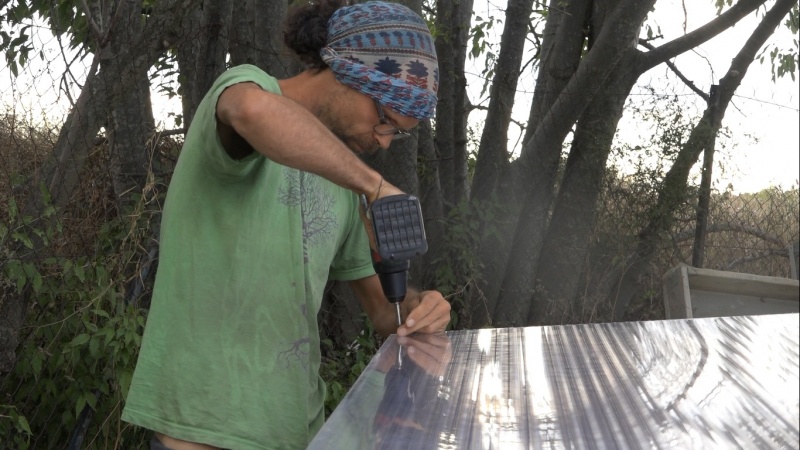
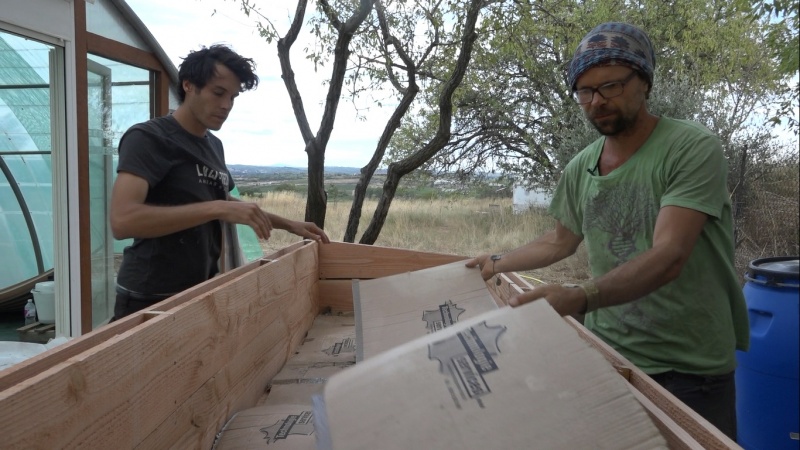
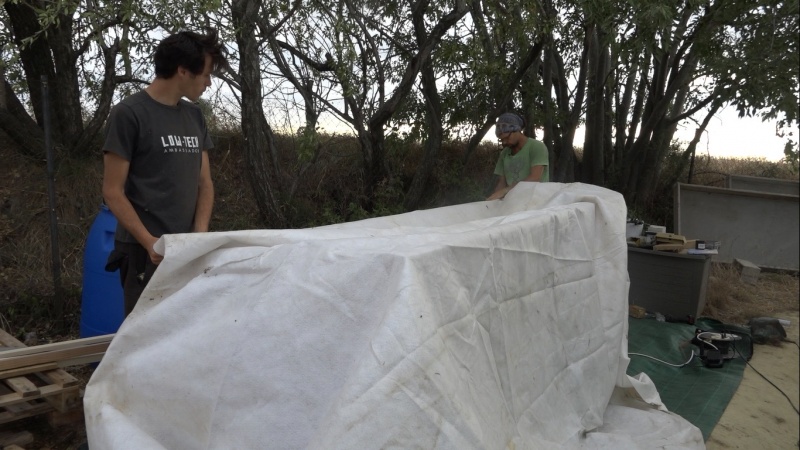
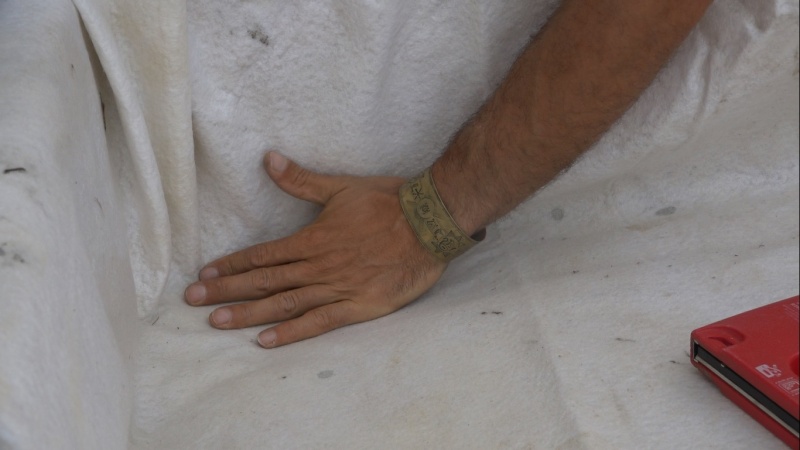
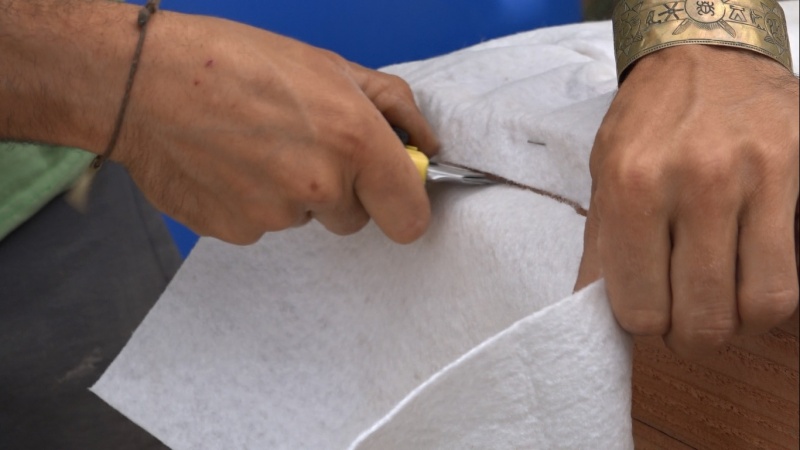
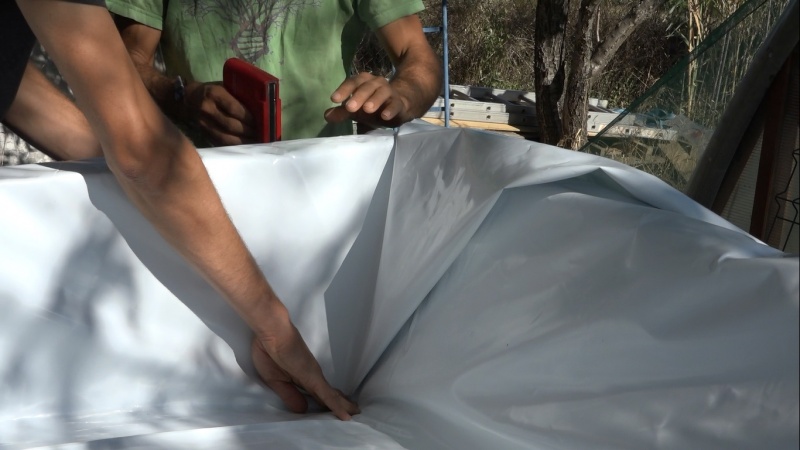
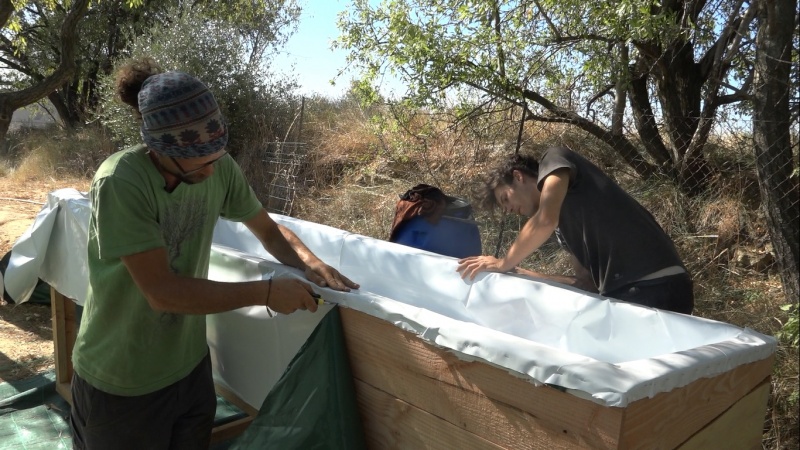
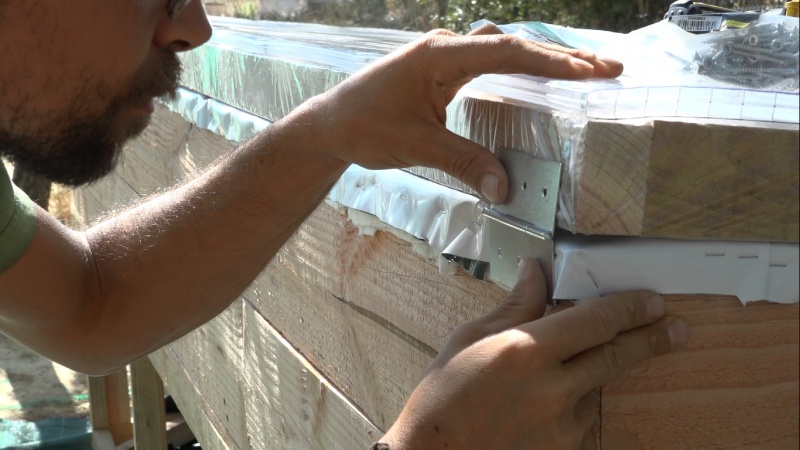
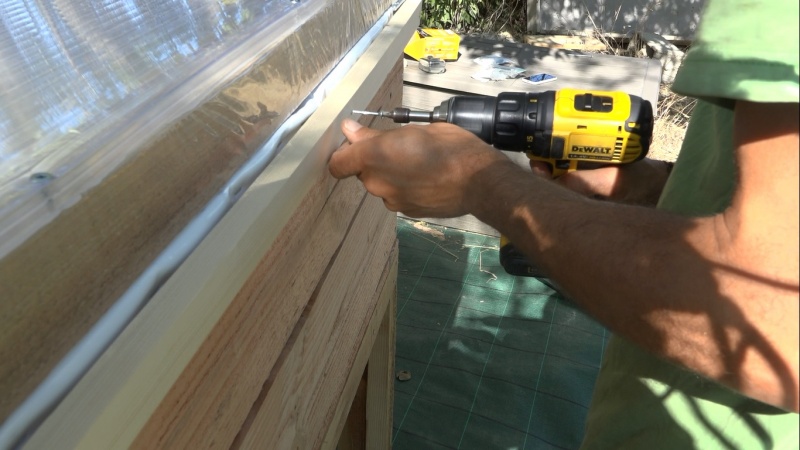
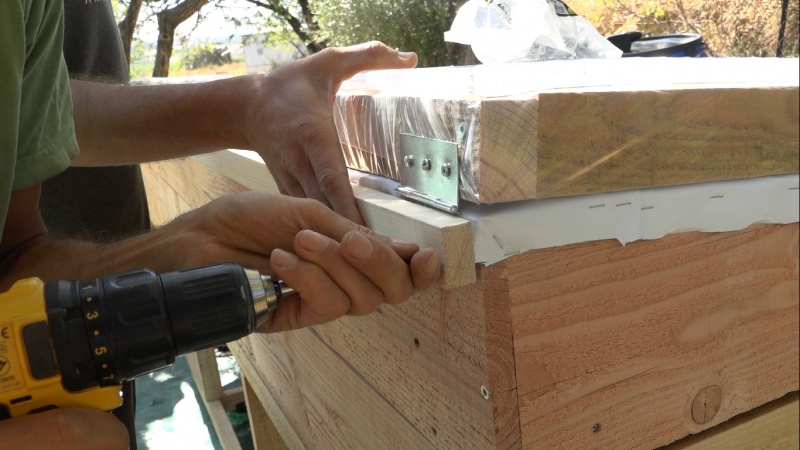
 Français
Français English
English Deutsch
Deutsch Español
Español Italiano
Italiano Português
Português